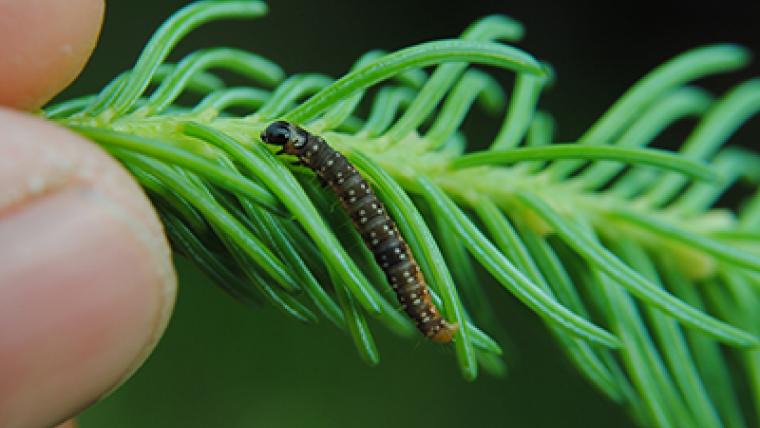Atlantic Forestry Centre duo turn home spaces into working science labs
By Brigitte Richard, Senior Communications Advisor, Atlantic Region
July 2020
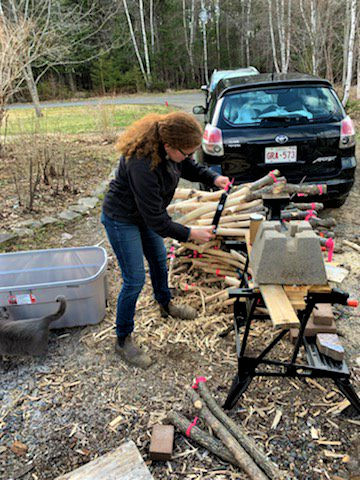
Kate peels back ash bark in the couple`s driveway looking for signs of emerald ash borer larvae.
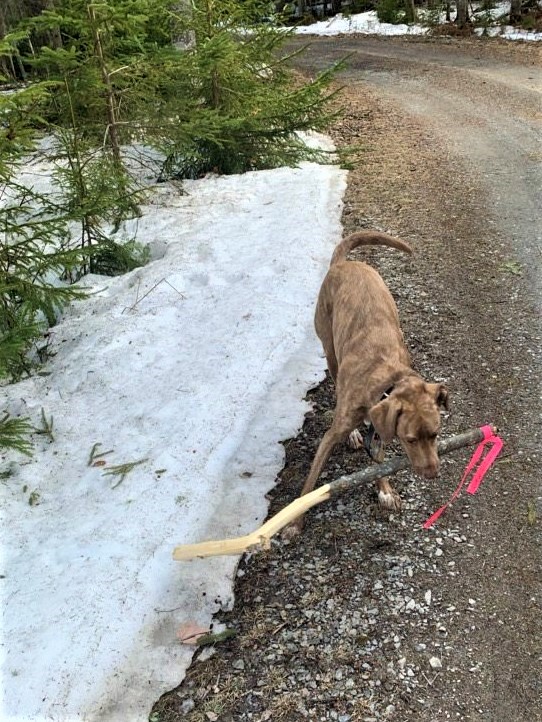
Lexi, the family dog, transporting branch samples to the driveway peeling station -- a true lab assistant!
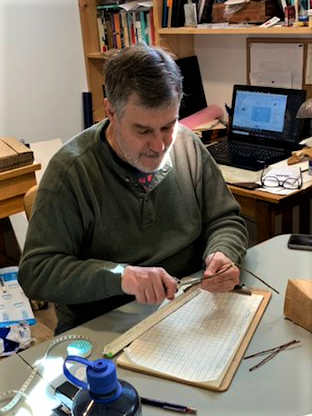
Roger processes choke and pin cherry seedlings in his home basement as part of the research project.
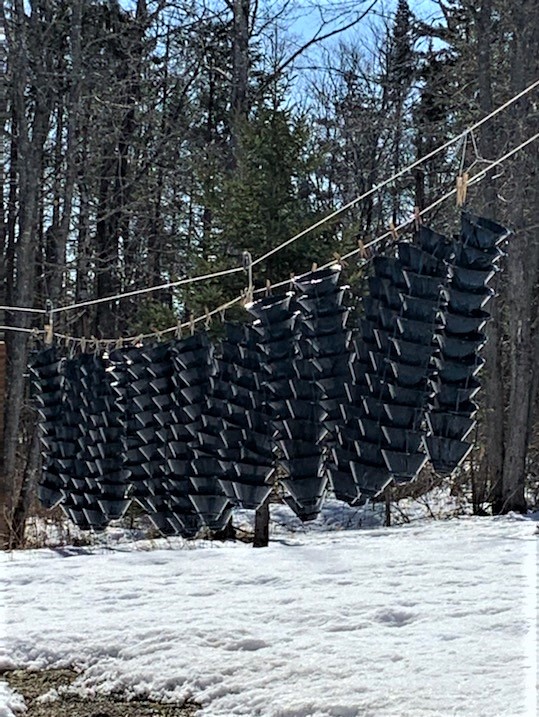
Forest beetle traps drying on Kate and Roger’s clothesline before being set up at the field sites.
Tucked away on a private lot in a small community just outside of Fredericton, New Brunswick, Natural Resources Canada scientists Kate Van Rooyen and Roger Graves have transformed their home into a mini-forestry lab. Insect traps hang from the clotheslines, seedling samples are measured at a makeshift workstation in the basement, and a branch-peeling station is set up in the driveway.
It had to be done. “I don’t like to sit still,” says Kate as she demonstrates her branch peeling setup. “When the office closed, I knew there had to be a way to do some of this work at home.”
No rest in the quest against a pest
Kate is a technician at the Atlantic Forestry Centre (AFC) in Fredericton. With the support of her supervisor, Jon Sweeney, she’s been leading ash tree surveys and monitoring areas around the city for signs of the destructive emerald ash borer over the past couple years.
In February 2020, with the help of the City of Fredericton and students from the Maritime College of Forest Technology, Kate and her team gathered branch samples from 150 ash trees. She was in the middle of processing these samples when the COVID-19 pandemic forced the AFC to close its doors.
With a new four-legged assistant at her side – Lexi, the family dog — Kate peels back the bark of the branches in an effort to find galleries, the long, snaky signs of potential emerald ash borer larvae presence. She uses a special method — developed by Krista Ryall, Jeff Fidgeon and Jean Turgeon at the Great Lakes Forestry Centre — to help detect emerald ash borer infestations in Ash trees with no obvious sign or symptom of an attack.
Kate explains:
“It’s one of the tools we use to help us with early detection of this highly destructive forest pest. In Atlantic Canada, emerald ash borer was first found in Edmundston, New Brunswick, in the spring of 2018 and in Bedford, Nova Scotia, in the fall of that year. Since then, the beetle has been found in Oromocto, about 20 kilometres east of Fredericton.
“Up to 99 percent of all ash trees can be killed within eight to 10 years of the insect’s arrival. This type of survey allows us to determine if the beetle is present and to put measures in place to slow the spread.”
Choke cherry and pin cherry seedlings in oil sand reclamation
As for Roger’s work in their home lab, he’s commandeered the basement library to process choke and pin cherry seedlings, using a pop-up table as a lab bench. He documents the growth characteristics of the seedlings before packaging them for the dry biomass measurements that will be performed when the office reopens.
A forest technician at AFC, Roger is working on a client-driven research project led by Joanne MacDonald, also with AFC. The goal: to speed up the pace of mineable oil sands reclamation and to increase local biodiversity by planting native shrub species.
Choke cherry and pin cherry were both identified as key species for this research. Yet some practical challenges must first be overcome. While growing in a container nursery, the details of their root development are difficult to establish. Also, their seedlings have had low survival rates on Athabasca oil sands reclamation sites.
AFC has been working on both problems: developing new nursery practices to improve root growth and showing the importance of choosing moist microsites for continued seedling growth. The results of this and related research will be widely shared with companies operating in the Athabasca oil sands and Alberta nurseries that provide seedlings.
Working from home, with a twist
Kate and Roger definitely are putting a new twist to working from home, but that’s what you have to do to make it all work in these unconventional circumstances.
“We’re fortunate to have the space and ability to set up these unconventional lab spaces to continue our work,” says Kate. “While I’m sure we’ll appreciate getting back to our usual routines at the AFC laboratories, these working-from-home days have been an interesting change in unusual times.”
Page details
- Date modified:


